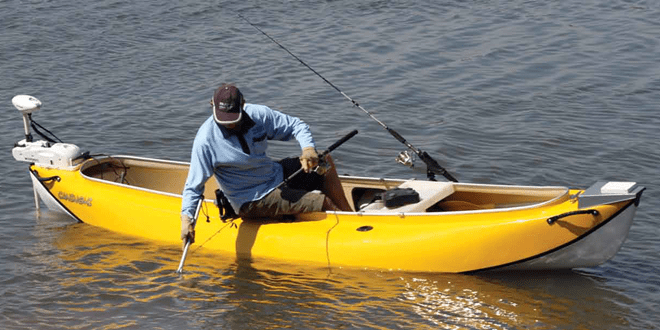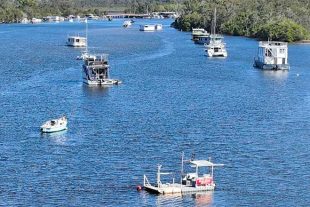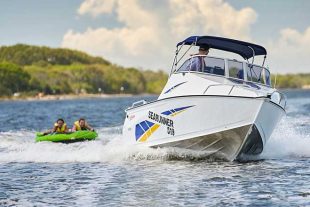Before we got into the specifics of the Rosco Caninghi, Ross explained a little about his life and how his passion grew into a fulltime job and career. He initially started paddling at about the age of nine or 10 and had already built three canoes by the ripe old age of 16. As we sat down to discuss the details and features of the new Rosco Caninghi over a cuppa, Ross pointed out one of his old designs resting against a fence in the front yard of a nearby house and you could see how proud he is of this well used craft, which has obviously seen many years on the water. The conversation moved back to the new vessel, which I’m sure Ross is even more proud of.
Although a relatively new design, the formulation of the Caninghi has taken place over many years, and many hours spent on the water. In fact the design was initially hand carved from a 1.2m squared piece of foam, which is the dimension of the beam. Generally you need a healthy beam to give stability and since this was to be a stand up fishing canoe, it needed plenty of width. From there the rest of the design fell into place. Large tumblehomes, or the balloon type sides, aid in the stability and provide buoyancy. This unique design gives maximum stability yet still allows you to paddle, as the top of the tumblehomes curve in to a narrower cockpit width of 60cm.
So regardless of whether you are standing up, moving around or just getting in and out, this increased buoyancy keeps the Caninghi level. Combined with an overall length of 4.34m it makes this a relatively big craft. Another benefit of the large sides is the increased inside storage. In fact there is ample room to stow tackle boxes and even some camping gear or for that matter anything you need. The pockets are within easy reach and with the sliding and reversible chairs, nothing is too hard to access.
Towards the rear of these pockets there is room to store a battery on each side, ensuring enough power to get you to your favourite fishing spot and home again.
This boat had a bow mount electric fitted to the rear. Although this might seem like a contradiction, the setup worked, and after a bit of playing with the foot control (I have a Minn Kota, so slightly different in operation) it was a pleasure to drive. However you are not limited to just having the electric on the rear. There is a mount on the front of the Caninghi, so the battery can be easily put there. This adjustment is made even easier with the Anderson plug that has been wired through. Alternatively you can get a different mounting plate that will take a small outboard. Obviously your desired destinations and how you plan to use the Rosco Caninghi will determine what power source you opt for.
With two up, two batteries, a bit of fishing and safety gear, anchor and removable bait board, the performance of the 54lb electric was more than adequate.
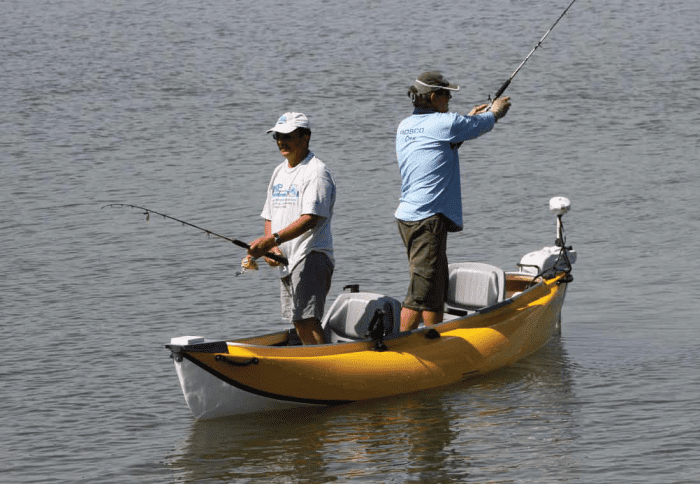
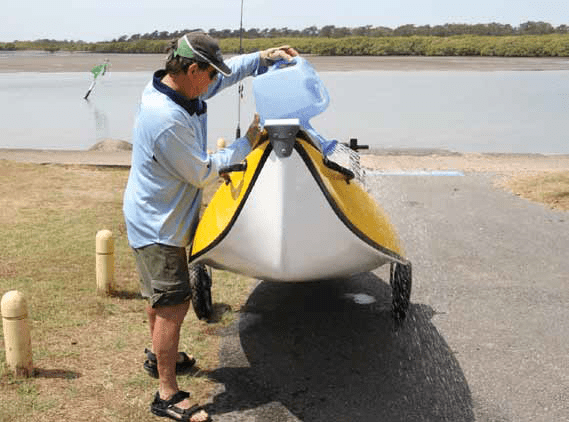
for direction and stability.
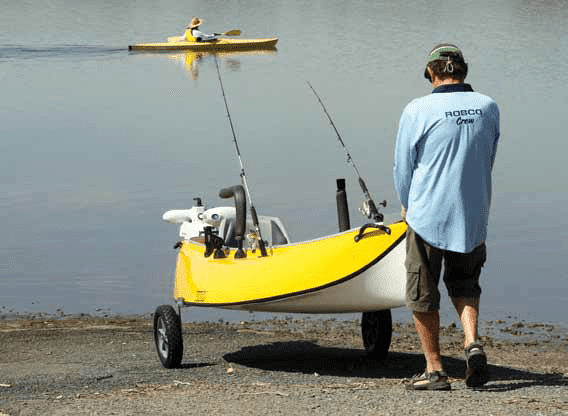
easy.
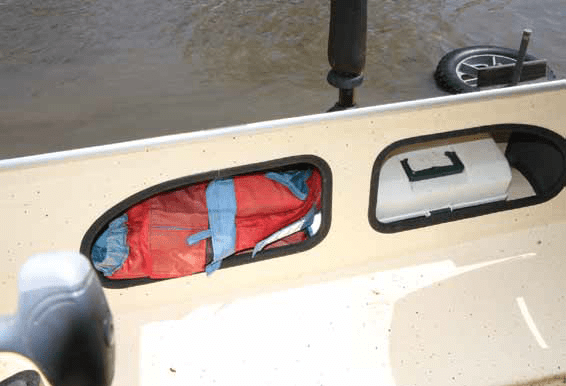
both sides.
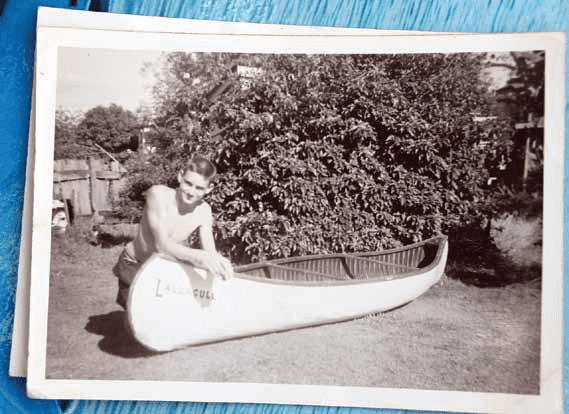
Another clever design is the support bar which can be rotated out of the way. This provides a great place to lean on when standing to fish and also a good reference point when moving about the Caninghi. Other features include a bait board that can slide along the top rail, providing a handy place to have an assortment of lures at the ready or a stable spot to put a drink. The same slide design has been used for the foldable cushioned seats which can be easily positioned for either one or two up use. If you have spent a few hours in either a canoe or kayak you will appreciate the benefits of a comfortable seat.
Something else you will welcome is the lightweight material that the Rosco Caninghi is constructed from. Ross had a sample piece which was only about a centimetre thick. I found it extremely light and tough, as I tried to bend it without success. With a weight of around 32kg, you have a lightweight craft that is tough but easy to handle (one person can load onto roof racks). Related to handling, Ross has patented a very nifty idea to help move the canoe around. This is the use of wheels that slot into the side so you can wheel the craft to the water. Not only can you transport it to the water, you can take it fully into the water, hop in and then remove the wheels. The reverse is also possible, as you can put the wheels back on while in deeper water and when they touch, you simply get out and grab hold of one of the handles and pull the canoe out of the water. And as there is ample storage in the Rosco Caninghi, you can keep the wheels with you at all times so you don’t have to run back to the car after launching. Positioning of the wheels allows you to easily manoeuvre the canoe even when fully loaded with batteries and your gear, as they are used as a pivoting point.
A short video showing how these wheels are attached as well as the Rosco Caninghi on the water can be accessed via www.bnbfishing.com.au
While the Rosco Caninghi is not going to suit everyone, it does have a very practical place in the market. It would be ideal for anyone wanting a dedicated fishing canoe with plenty of stability, and the added feature of being able fish comfortably while standing up. As a point of interest, Ross also showed me an email where there has been interest in taking this Aussie invention to the worldwide market. So obviously it is not just me who thinks this is a top stand up fishing platform.
For more information on the Caninghi or other models in the Rosco Canoes range, check out www.roscocanoes.com.au or call 07 3359 9330.
Alternatively you can inspect the range at their showroom at the Goodtime Surf & Sail building at 29 Ipswich Road, Woolloongabba.
 Bush ‘n Beach Fishing Magazine Location reports & tips for fishing, boating, camping, kayaking, 4WDing in Queensland and Northern NSW
Bush ‘n Beach Fishing Magazine Location reports & tips for fishing, boating, camping, kayaking, 4WDing in Queensland and Northern NSW

